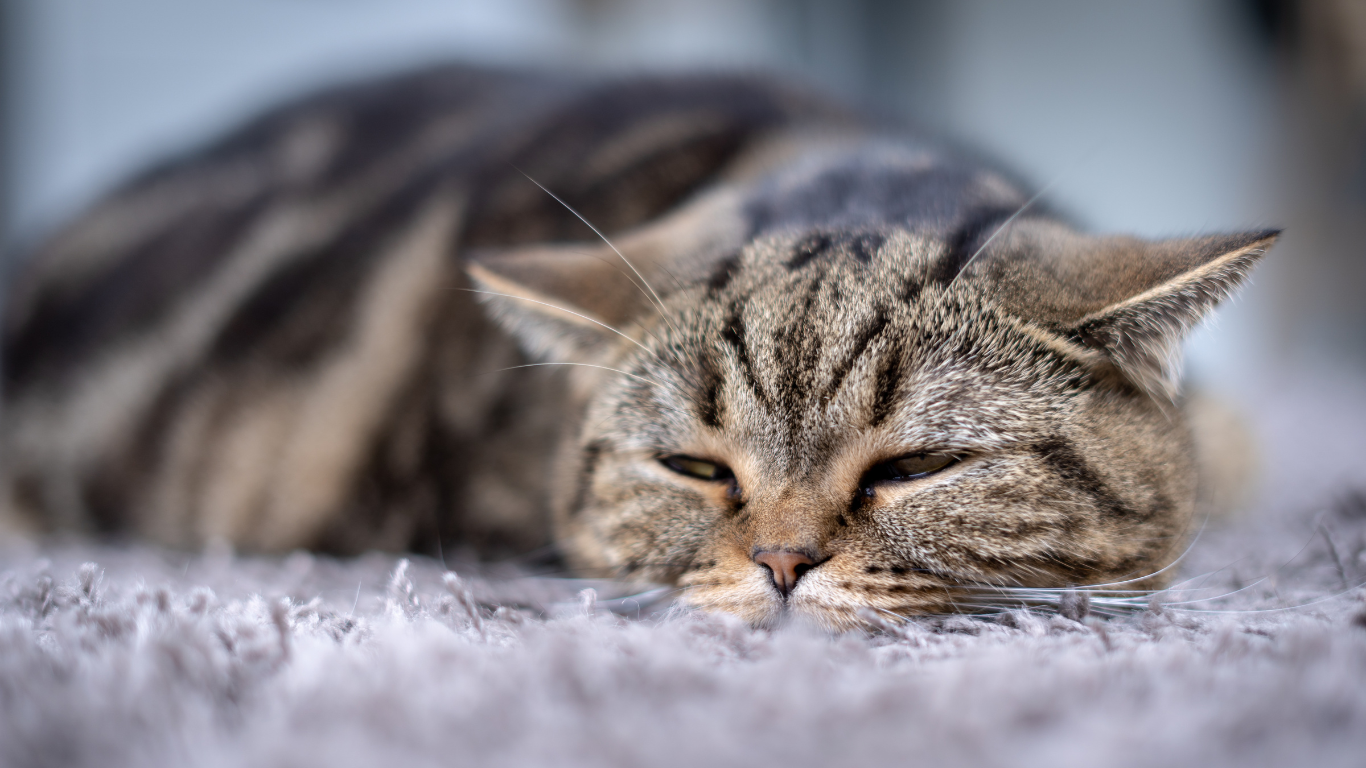
Diabetes is a hormonal metabolic disorder that occurs very frequently in cats, also in combination with other hormonal metabolic disorders such as overactive thyroid ( hyperthyroidism ). In contrast to dogs, in which type 1 diabetes occurs almost exclusively (see Diabetes in Dogs ), cats almost exclusively suffer from type 2 diabetes, the cause of which is a combination of two factors:
- The insulin-producing cells (islets of Langerhans) produce too little insulin.
- The target cells in the tissue do not respond to insulin (insulin resistance).
After eating food, blood sugar levels rise and, in healthy cats, are stored in the cells as an energy source through the release of insulin. Insulin is therefore the key hormone for the entire carbohydrate metabolism, which includes sugar. If this insulin is missing or is not sufficiently available, the blood sugar level in the blood remains elevated and is therefore missing as an energy source in the cells. If the concentration of sugar molecules exceeds the so-called kidney threshold, sugar molecules pass into the urine and take a lot of water with them. This then leads to the typical symptoms, namely increased urination ( polyuria ) and thirst ( polydipsia ) and weight loss despite increased appetite (polyphagia). The muscle tone decreases and additional nerve disease can lead to patency of the hind limbs, so that the cat walks with its entire foot up to the heel instead of the tips of its feet (plantigrade gait). The diabetic cat often lacks “body tension” and at the same time has dry and flaky fur.
If the cat's diabetes remains untreated for a longer period of time and the cells do not receive enough energy in the form of sugar, the body breaks down more fat to provide energy for the cells. This creates so-called ketone bodies that lead to acidification of the blood, which represents a dangerous metabolic imbalance (diabetic ketoacidosis). In this case, the cat stops eating and drinking and vomits.
Risk factors and incidence of diabetes in cats
Diabetes mellitus is one of the most common hormonal disorders in cats, especially in older animals. The exact cause of diabetes in cats is not always clear, but there are some risk factors that may contribute, such as obesity, genetics, and inactivity. It usually affects cats from middle age onwards, preferably neutered male cats.
Certain breeds such as Maine Coons, long-haired domestic cats, short-haired domestic cats, Russian Blues and Siamese cats are more commonly affected.
Symptoms of diabetes in cats
- increased drinking
- increased urination
- Weight loss despite increased appetite
- weakness
- Vomit
- increased susceptibility to infections
Diagnosis of diabetes in cats
Diagnosis of diabetes in cats is done through a combination of clinical symptoms, blood tests (such as glucose and fructosamine measurements), and urine tests to detect excessive levels of sugar (glucose) in the blood and urine. Cats are prone to a stress-related increase in glucose in their blood due to visits to the vet and additional blood samples. For this reason, fructosamine is also determined in the blood, which provides an indication of the glucose level in the blood for one to two weeks and is independent of stress.
Therapy of diabetes in cats
Treatment for diabetes in cats usually involves a combination of insulin therapy, dietary changes, and regular exercise. Insulin is usually administered twice daily through an injection under the skin, which the cat owner does at home to regulate blood sugar levels. It's best to do this while the cat is eating. On the one hand, the cat is distracted by eating and, on the other hand, the owner does not run the risk of the cat becoming hypoglycemic due to a possible refusal to eat. Initially, after consultation with the veterinarian, a low dose is started in order to get the organism used to the added insulin. The dose is then slowly increased as needed.
Nowadays, cat owners can also carry out blood sugar measurements relatively easily at home, which saves the cat and therefore the exact measurement a lot of stress. To do this, a drop of blood is best obtained from the edge of the ear using a so-called lancet and dripped onto a small piece of measuring paper. The current value can then be determined very easily and quickly using a measuring device. All of this is always done in close consultation with the veterinarian.
An adapted diet consisting of high-quality, balanced cat food with a low carbohydrate content is also important.
Regular exercise can improve insulin sensitivity.
Prognosis for cats with diabetes
The prognosis for cats with diabetes depends on various factors, including the severity of the disease and the owner's willingness to strictly adhere to the therapy plan. With appropriate treatment and regular monitoring, your cat with diabetes can live a normal life. However, the disease often requires lifelong therapy and care.










